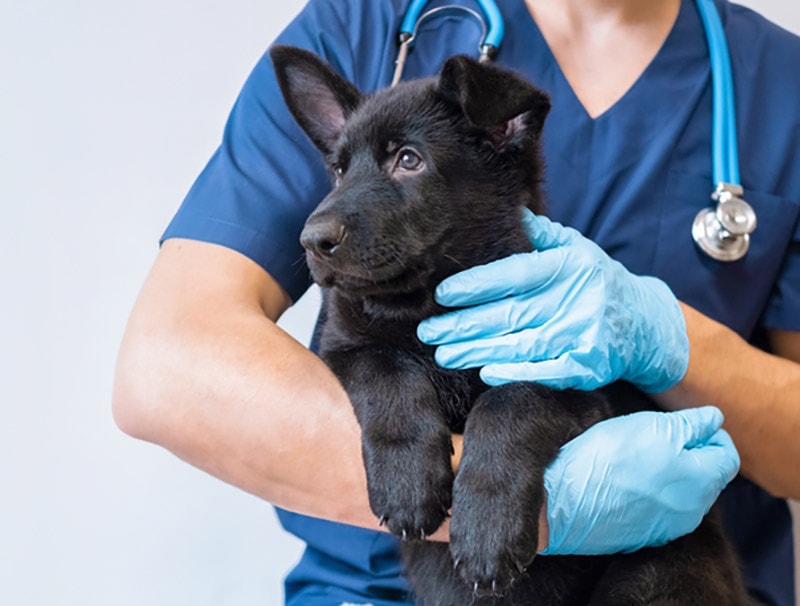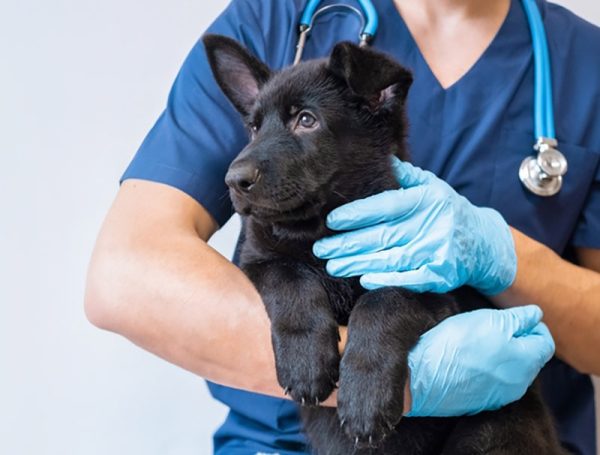Portosystemic shunts are defects in the blood flow between the abdominal organs and the liver. Shunts are due to abnormal blood vessels, shunting blood into the systemic circulation and bypassing the liver and its metabolic processes.
When blood does not flow normally to the liver, several health issues can result, including poor growth, weight loss, behavioral problems, and neurological issues like seizures and coma. Some portosystemic shunts are severe and life-threatening and, without proper treatment, can lead to poor outcomes for the dog.
What Is a Portosystemic Shunt?
Portosystemic shunts, also known as hepatic or liver shunts, are congenital or acquired defects that occur in dogs when there is an abnormal flow of blood from the liver to other parts of the body. Normally, blood draining the abdominal organs (e.g., intestines, pancreas, spleen) flows into the portal vein to be delivered to the liver to be metabolized and processed.
With a portosystemic shunt, the blood flows straight to the systemic circulation instead of going first to the liver, either through an abnormal connection between the portal vein, one of its branches, or another vein. This abnormal redirection of blood flow results in toxins, wastes, and nutrients bypassing the liver and its metabolic processes, leading to various health issues.
In addition, the liver does not receive essential nutrients for its own development and maintenance. The condition can vary in severity and can cause a variety of symptoms and issues in dogs. In most cases, a portosystemic shunt is a congenital defect that a dog was simply born with.
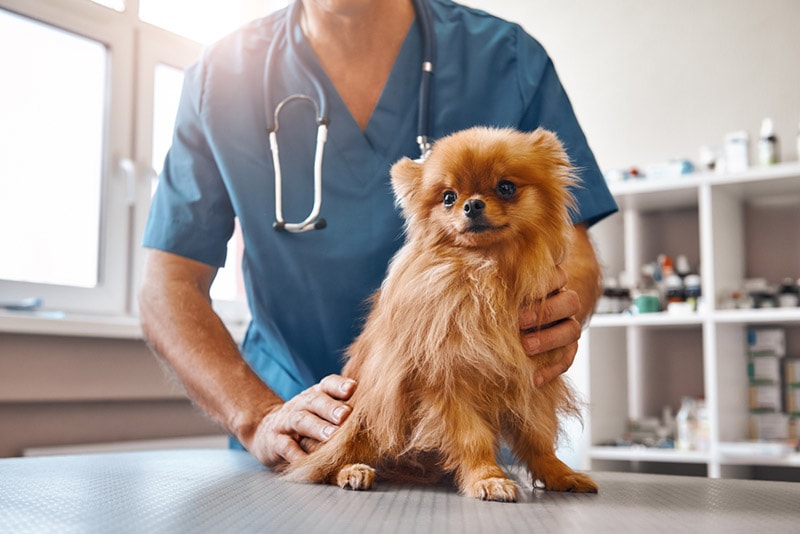
What Are the Signs of a Portosystemic Shunt?
The signs of a portosystemic shunt in dogs can vary depending on the severity of the condition as well as the location of the shunt. The most common signs of a portosystemic shunt include the following:
- Poor or stunted growth in puppies
- Poor muscle development
- Weight loss
- Abnormal neurological or behavioral signs (e.g., listlessness, depression, disorientation, staring into space, circling, head pressing, blindness)
- Seizures
Less common signs of a portosystemic shunt can include:
- Gastrointestinal signs (e.g., vomiting, diarrhea, or constipation)
- Poor appetite
- Increased thirst and urination
- Coma
Dogs with portosystemic shunts typically take longer to wake up from anesthesia. Some behavioral signs like disorientation and circling may only occur after eating a meal high in protein. In some dogs, signs of their portosystemic shunt might not appear until they are much older.
If you notice any of the above signs in your dogs, it is important to seek veterinary care for a proper assessment.
What Are the Causes of a Portosystemic Shunt?
Portosystemic shunts are caused by an abnormal flow of blood from the portal vein to a systemic vein, resulting in blood bypassing the liver and its important metabolic functions. Dogs can have a portosystemic shunt as a congenital defect (an abnormality they were born with) or as a problem they develop later in life (an acquired shunt). Portosystemic shunts can be acquired from trauma, severe liver disease (cirrhosis), or other health conditions.
Most portosystemic shunts in dogs are congenital defects. Some of these congenital defects are also inherited, meaning that the dog developed the shunt because of the genes it inherited. The genetic basis of portosystemic shunts is not completely understood, but certain breeds are known to be more at risk of portosystemic shunts, including Yorkshire Terriers, Malteses, Poodles, Irish Setters, Dachshunds, Australian Cattle Dogs, Miniature Schnauzers, and Labrador Retrievers.
There are two types of congenital portosystemic shunts: intrahepatic (inside the liver) and extrahepatic (outside the liver). Single extrahepatic shunts are almost always congenital and oftentimes affect the smaller breed dogs (e.g., Yorkshire Terriers). Single intrahepatic shunts tend to affect larger breed dogs.
Acquired portosystemic shunts are usually a result of liver diseases like hepatic hypertension or cirrhosis. With these conditions, the liver attempts to compensate for the problem, resulting in multiple vessels forming the shunt to delay or prevent liver failure. Acquired portosystemic shunts can occur in any animal or breed.
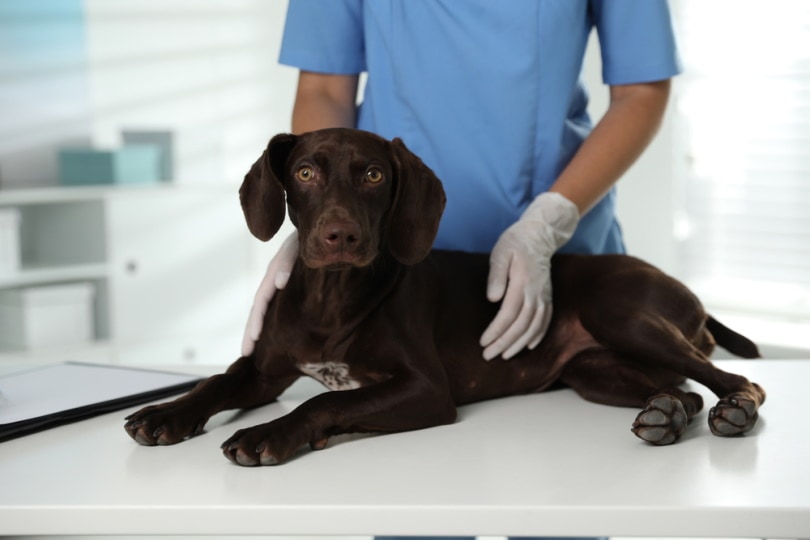
How Do I Care for a Dog With a Portosystemic Shunt?
Care and treatment for a dog with a portosystemic shunt vary depending on the severity of the condition and the overall health status of the dog. The standard treatment for a congenital portosystemic shunt is surgical ligation of the abnormal vessel causing the shunt. Medicine alone cannot resolve this malfunction. Because the liver requires substances from the portal vein’s blood flow to properly function, surgical correction is necessary; otherwise, long-term survival is unlikely.
Prior to a surgical correction, medical treatment is started to stabilize the dog and minimize the neurologic signs (e.g., abnormal behavior and seizures) caused by the shunt. The goal of medical treatment is to minimize the production and absorption of waste products such as ammonia. In severe cases, some dogs require additional support for stabilization before surgery (e.g., intravenous fluid therapy, seizure medication, etc.).
In some cases, medical management of a portosystemic shunt is also an option when the dog has concurrent health issues that can complicate its surgical procedure and recovery or when surgery itself is unlikely to completely correct the problem.
Medical management includes diet changes to reduce excessive amounts of protein, lactulose (decreases absorption of ammonia), and sometimes, antibiotics to reduce intestinal bacterial overgrowth.
Frequently Asked Questions (FAQ)
How is a portosystemic shunt diagnosed?
If your dog is showing signs of a portosystemic shunt, it is important to seek veterinary care for proper assessment and treatment. Depending on your dog’s signs and history, your veterinarian will likely recommend the following tests to diagnose the problem:
- Complete Blood Cell Count and Serum Chemistries: These tests might show abnormal findings such as anemia, low blood urea nitrogen (BUN), low albumin, and increased liver enzymes (ALP, ALT).
- Urinalysis: The urine from dogs with portosystemic shunts is sometimes dilute, shows signs of infection, and can contain small crystals called ammonium biurate crystals.
- Bile Acids Test: This is a liver function test. Often, a dog with a portosystemic shunt will have increased bile acids. Increased bile acids are not specific to a portosystemic shunt but can occur in cases of any liver disease.
- Ammonia Tolerance Test, Abdominal Ultrasound, Computed Tomography (CT) Scan, Nuclear Scintigraphy, Portography, Magnetic Resonance Imaging (MRI), and exploratory surgery are all additional diagnostic tests that can be performed to diagnose a portosystemic shunt.
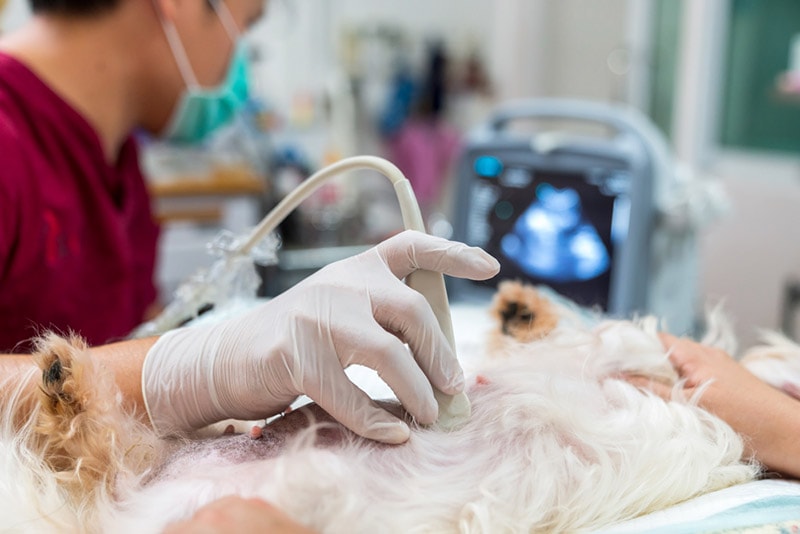
What Is the Prognosis for a Dog With a Portosystemic Shunt?
The severity of portosystemic shunts can vary greatly, with some cases being serious and potentially life-threatening. Following diet change and medication, most dogs with portosystemic shunts begin to improve immediately. However, medicine and diet changes alone will not entirely fix a congenital portosystemic shunt, so in these instances, unless surgery is performed, long-term survival is not expected.
Dogs with a single extrahepatic shunt have an excellent prognosis with surgery. Dogs with intrahepatic shunts (shunts within the liver itself) are more at risk for complications following surgery.
Conclusion
Depending on the origin of the shunt, the dog’s age, and overall health condition, surgical or medical treatment can manage this condition. Because some cases of portosystemic shunts can be serious and potentially life-threatening, if your dog is showing signs of a shunt, it is important to have your dog evaluated by a veterinarian for a proper diagnosis and treatment recommendations.
Featured Image Credit: Yana Vasileva, Shutterstock

